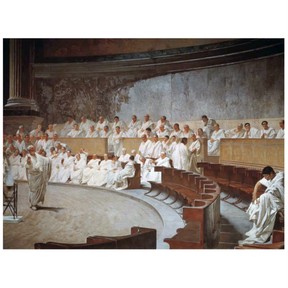
Roman Republic: Society and Government
I can explain how society and government were structured in the Roman Republic.



8,000 schools use Gynzy
92,000 teachers use Gynzy
1,600,000 students use Gynzy
General
In this lesson, students learn about the social classes and government of the Roman Republic. They will analyze the changes in government and society at the time, including the formation of Ancient Rome’s tripartite government system. Students then compare to the three branches of government seen in the U.S. today.
Learning Objective
Students will be able to describe the government of the Roman Republic and analyze its influence on the United States government today.
Introduction
Show students the Roman Forum, the center of the ancient Roman city. Ask students to recall what they know about Ancient Rome. What do they remember? What questions do they still have? Review how the last king was overthrown before Ancient Rome became a republic.
Instruction
Tell students that the new government of Ancient Rome was called SPQR, which stands for the Senate and the People of Rome. Describe Ancient Roman society and the two classes of the patricians and the plebeians. Describe the roles and rules for each of these social classes including slaves and freedmen. Then have students drag to put the social classes in the correct order on the pyramid. After this, introduce the tripartite government to students and the three Roman branches of government. Have students compare to the United States government system of checks and balances. Explain the role of the two consuls and the praetors, as well as the senate and the assembly. Introduce the formation and the importance of the twelve tables.
Quiz
Check student understanding with ten multiple-choice, fill-in, and true or false questions.
Closing
Students drag the titles of each branch of government to the correct description on the chart.
The online teaching platform for interactive whiteboards and displays in schools
Save time building lessons
Manage the classroom more efficiently
Increase student engagement
Discover more!
About Gynzy
Gynzy is an online teaching platform for interactive whiteboards and displays in schools.
With a focus on elementary education, Gynzy’s Whiteboard, digital tools, and activities make it easy for teachers to save time building lessons, increase student engagement, and make classroom management more efficient.



